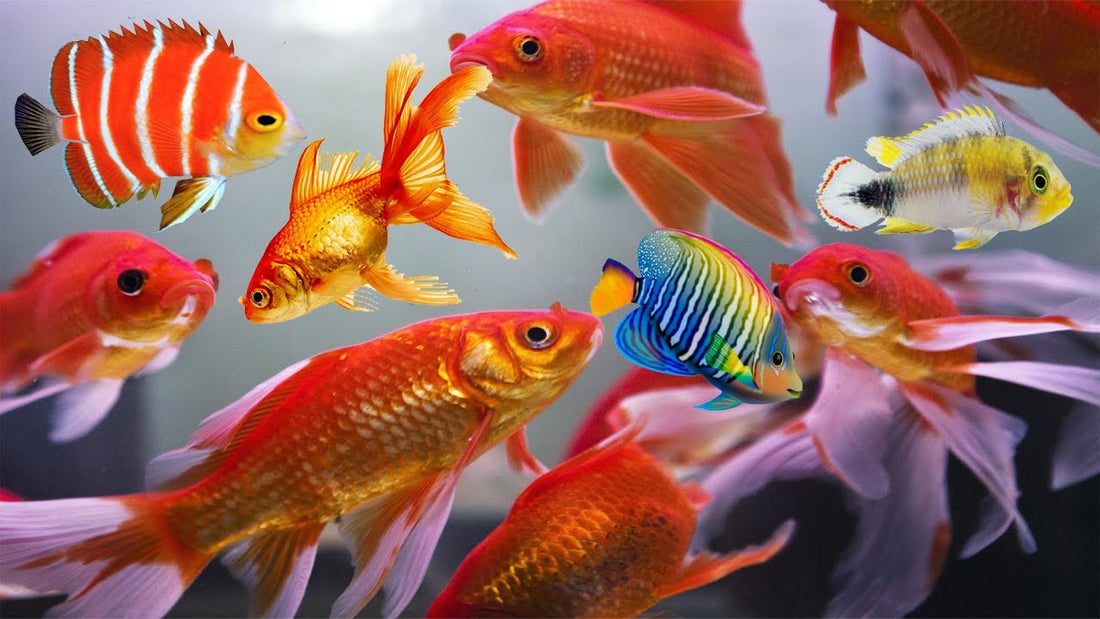
Decoding 7 Causes of Bubbles and Foam in Your Aquarium Water
As an aquarist, seeing bubbles and froth in your aquarium water can be frightening. While bubbles and froth may appear to be harmless, they can suggest underlying problems with the health and stability of your aquatic environment. In this comprehensive blog, we'll decode seven typical causes of bubbles and foam in aquarium water, casting light on potential problems and providing solutions. Let's dive in and solve the mysteries of these aquatic abnormalities.
- Organic Waste Accumulation
One of the most prevalent causes of bubbles and foam in aquarium water is the buildup of organic waste. Organic stuff, such as uneaten food, fish waste, and decaying plant material, can decompose and emit gases such as CO2. These gases can create bubbles on the water's surface, producing foam and a frothy appearance. Regular maintenance measures, such as frequent water changes and thorough substrate cleaning, can help avoid organic waste buildup and reduce the creation of bubbles and foam.
- Protein Skimmer Operations
Protein skimmers are frequently used in marine aquariums to remove chemical compounds and proteins from the water. Protein skimmers, while excellent in maintaining water quality, can produce bubbles and froth while in operation. The skimming process aerates the water, causing bubbles to form and gather on its surface. While some foaming is normal in protein skimmers, excessive foaming may signal a problem with skimmer adjustment or maintenance. Regular cleaning and tuning of the protein skimmer can help to improve its function and reduce foam generation.
- Surface Agitation
Aeration and surface agitation are essential for sustaining oxygen levels and gas exchange in the aquarium. However, excessive surface agitation can produce bubbles and froth. Aggressive water flow from filters, powerheads, or airstones can generate surface turbulence, trapping air and forming bubbles. Adjusting the flow rate of filtering equipment or moving air stones can help to lessen surface agitation and the development of foam.
- Cleaning product residue
Cleaning agents, such as glass cleaners or aquarium conditioners, can leave residues in the aquarium water. These residues may contain surfactants or other substances that help to generate bubbles and foam. Before reintroducing cleaning products into the aquarium, any equipment or surfaces that have come into contact with them must be properly rinsed and dried. Furthermore, utilising aquarium-safe cleaning chemicals and adhering to manufacturer guidelines can help reduce the possibility of residue buildup and foam development.
- Biological Activities
Biological processes in the aquarium, such as bacterial breakdown and microbial activity, can also help to generate bubbles and foam. Aerobic bacteria degrade organic materials, releasing gases like carbon dioxide and methane as byproducts. Under some conditions, these gases can concentrate and create bubbles at the water's surface, producing foam. Maintaining a balanced ecology with adequate filtration, good bacteria colonies, and frequent water testing can all contribute to healthy biological activity and reduced foam production.
- Dissolved Organic Compounds
Dissolved organic components including proteins, amino acids, and fatty acids can help keep aquarium water stable. However, high levels of dissolved organics can cause water quality difficulties including foam production. Fish excrement, uneaten food, and decomposing plant materials emit organic chemicals into the water, which can build up over time. Regular water changes, adequate filtration, and monitoring of water parameters can assist prevent the accumulation of dissolved organics and reduce foam formation
- Chemical Additives and Medicine
Certain chemical additives and pharmaceuticals used in aquariums can also cause bubbles and froth to form. Some water conditioners and pharmaceuticals contain surfactants or foaming chemicals, which can react with water chemistry to produce foam. Furthermore, overdose or inappropriate use of chemical treatments can upset the equilibrium of the aquarium ecosystem, resulting in foam development due to stress or chemical reactions. It is critical to read dosing directions carefully and only use chemical additions and drugs as advised by the manufacturer.
Why is your aquarium water foaming?
Bubbles and froth in aquarium water may indicate a variety of underlying issues affecting water quality and ecosystem stability. Understanding the probable causes of bubbles and foam allows aquarists to take proactive steps to solve these concerns and ensure a healthy aquatic environment for their fish and other aquatic inhabitants. Regular maintenance, appropriate equipment adjustment, and careful monitoring of water parameters are all necessary measures for preventing foam production and promoting the health of aquarium occupants. Remember, a little detective work and attention to detail can go a long way towards solving the riddles of bubbles and foam in your aquarium water.
At Intan, we are here to provide you with premium fish feed. Our feed is tailored to meet the specific needs of each species. Every feed can spark positive change and create a future promoting quality, resilience, and well-being. We aim to serve the needs of hobbyists and breeders for the best quality of each species’ unique requirements. To know more about us, check out our Instagram page or find us at our nearest out spot.
We are not just a brand; we are stewards of the underwater world. We believe in the well-being of our friends and their mental health. Understanding and addressing the stressors that affect fish is not just a concept for us, it's a commitment. Through our dedication to research and innovative products, we aim to ensure that fish everywhere can lead happier, healthier lives.
